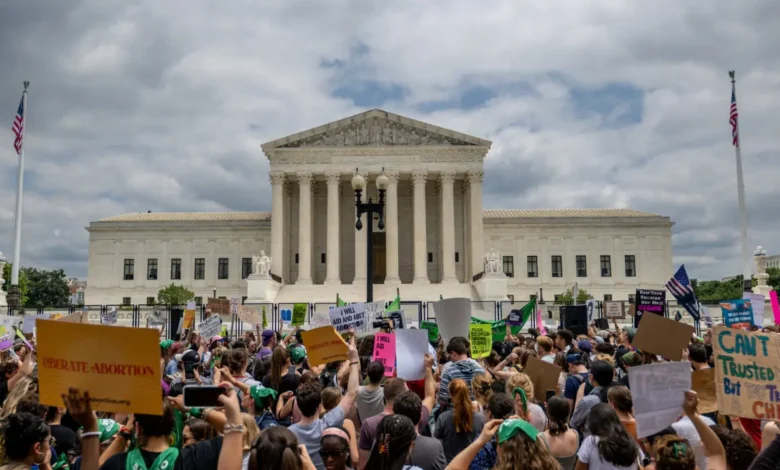Chevron Doctrine for Dummies: A Beginner’s Guide to Understanding the Legal Giant

In today’s complex world of government, law, and regulation, few legal doctrines have sparked as much debate as the Chevron Doctrine. But what does it mean? And why is it suddenly in the spotlight? This guide — Chevron Doctrine for Dummies — breaks down everything in simple, understandable terms. Whether you’re a curious student, a casual reader, or someone navigating policy or law, this article will help you understand what the Chevron Doctrine is, how it works, and why it’s so important in the U.S. legal system.
What Is the Chevron Doctrine?
The Chevron Doctrine refers to a legal principle that governs how courts handle situations where federal agencies interpret ambiguous laws. It originated from the landmark 1984 Supreme Court case Chevron U.S.A., Inc. v. Natural Resources Defense Council, Inc.
In that case, the Court ruled that when a law passed by Congress is ambiguous, the federal agency’s interpretation should be respected by the courts enforcing that law — as long as the agency’s interpretation is reasonable.
This principle altered the way laws are interpreted in the United States, granting more power to federal agencies.
Why It’s Called the Chevron Doctrine
The doctrine gets its name from the Chevron Corporation, a major oil company. The company was involved in a lawsuit regarding the Environmental Protection Agency’s (EPA) interpretation of specific provisions of the Clean Air Act.
The Court sided with the EPA, and in doing so, established a two-step framework for evaluating agency interpretations — which we now refer to as the Chevron Doctrine.
Chevron Doctrine for Dummies: The Two-Step Test Explained
The heart of the Chevron Doctrine lies in its two-step legal test, which courts use to evaluate agency decisions:
Has Congress Directly Spoken to the Issue?
- If a statute is clear and unambiguous, the court must apply the law as written — no agency interpretation needed.
If the Law Is Ambiguous, Is the Agency’s Interpretation Reasonable?
- If the statute is unclear or silent, the agency’s interpretation must be respected by the courts, provided that it’s reasonable, even if it’s not the only or best interpretation.
This two-step approach helps manage the complex relationships between Congress, administrative agencies, and the judicial system.
Why the Chevron Doctrine Was Created
In the 1980s, federal regulations were rapidly expanding, especially in areas like:
- Environmental protection
- Telecommunications
- Health and safety
- Immigration and labor
Congress often wrote broad laws that needed more detailed implementation. That’s where federal agencies like the EPA, FDA, FCC, and IRS came in — they used their expertise to write rules and guidelines to enforce these laws.
The Chevron Doctrine was designed to:
- Recognize agency expertise in specific subject areas.
- Avoid judicial overreach, where judges might substitute their policy preferences.
- Create consistency and efficiency in regulatory enforcement.
Chevron Doctrine for Dummies: Why It Matters Today
So why is the Chevron Doctrine still making headlines today?
Because it’s at the center of a significant legal and political battle.
Critics argue that the doctrine gives too much power to unelected federal bureaucrats, allowing agencies to act like lawmakers. They claim it:
- Undermines democracy by allowing agencies, rather than Congress, to make significant decisions.
- Reduces judicial oversight, allowing agencies to stretch their powers.
- Threatens individual and business rights by enabling aggressive regulatory actions.
Supporters, on the other hand, believe:
- Agencies are better equipped than courts to understand technical and scientific matters.
- Deference ensures stable policy implementation.
- Courts are not meant to be policymakers — that’s the job of the agency.
Examples of Chevron in Action
To make things more concrete, here are some real-world examples where the Chevron Doctrine has been used:
Environmental Protection (EPA)
The EPA interpreted specific provisions of the Clean Air Act to regulate carbon emissions from power plants. Courts deferred to the agency’s scientific reasoning under Chevron.
Healthcare (HHS)
The Department of Health and Human Services used Chevron to define what counts as “preventive services” under the Affordable Care Act.
Immigration (DHS)
Agencies like USCIS interpreted visa laws and asylum eligibility rules — often challenged in court, but upheld using Chevron principles.
Chevron Doctrine and the Supreme Court in 2024–2025
The Supreme Court has recently become more skeptical of the Chevron doctrine. Many experts believe the doctrine is on the verge of being overturned or, at the very least, seriously limited.
One critical case is Loper Bright Enterprises v. Raimondo, expected to clarify whether courts must continue deferring to agency interpretations. If Chevron is overturned, it could:
- Reshape the power balance between courts and agencies.
- Open the floodgates to more lawsuits against federal rules.
- Slow down regulation in areas like climate change, public health, and finance.
This could have a ripple effect across American governance and business regulation.
Chevron Doctrine for Dummies: What Happens if It’s Overturned?
Here’s what might change:
| Before (Chevron in Effect) | After (Chevron Weakened or Overturned) |
|---|---|
| Courts defer to agencies. | Courts interpret laws themselves. |
| Agencies have more flexibility. | Agency decisions more easily challenged. |
| Regulation faster and more centralized. | Regulation slower, more fragmented. |
| Public policies more consistent. | Increased legal uncertainty. |
The Supreme Court’s decision could have significant impacts on climate rules, tech regulations, healthcare policies, and other areas.
Chevron Doctrine vs. Nondelegation Doctrine
To fully understand what’s at stake, it is helpful to contrast Chevron with another legal theory, the Nondelegation Doctrine.
While Chevron gives more power to agencies, the Nondelegation Doctrine says Congress can’t delegate too much power to them in the first place.
If Chevron is removed and Nondelegation is revived, it could mean:
- Courts strike down laws that give agencies vague authority.
- Congress must write more detailed laws — a slow and challenging process.
- Regulatory action becomes highly restricted.
This shift would return much of the power from agencies to courts and Congress.
Conclusion: Chevron Doctrine for Dummies in the Real World
In this beginner’s guide — Chevron Doctrine for Dummies — we’ve explored the what, why, and how of one of the most influential legal principles in modern American law. Created to balance agency expertise and judicial oversight, the Chevron Doctrine helped shape regulatory America for four decades.
You May Also Read: Justin Billingsley Greene Law: Legal Expertise, Innovation, and Integrity in Modern Practice




